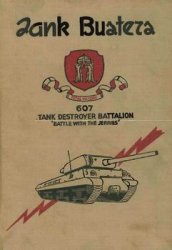One of the oldest and largest of the nation’s immigrant groups, Irish Americans in the 1930s and 1940s achieved new prominence in the Democratic Party, government, literary and artistic circles, organized LABOR, and the Catholic Church. Irish Americans, now largely second-, third-, and even fourth-generation Americans, were increasingly accepted by others despite the persistence of anti-Catholic and anti-Irish prejudice well into the mid-20th century.
Most of the heavily urban Irish Americans were of the working class and lower middle class, often overrepresented in police and fire departments. Despite such obvious exceptions as Joseph P. Kennedy, their economic circumstances often proved trying during the Great Depression. The Studs Lonigan trilogy of novelist James
T. Farrell reflected the difficulties of working-class Irish-American life. But the Irish had grown accustomed to group self-reliance, could count on assistance from Irish-dominated city governments, and had a growing middle class able to weather the depression.
Irish neighborhoods were most prevalent and cohesive in the big cities of the Northeast, such as New York, Boston, and Philadelphia, although Chicago and San Francisco also had large and significant Irish-American populations. Elsewhere, Irish communities slowly dissolved in the early decades of the 20th century, partly because immigration declined, especially after 1924, partly because of residential mobility, partly because younger Irish Americans were increasingly less inclined to marry someone of Irish extraction, particularly in the West and Midwest. Irish Americans were elected to both houses of Congress in larger numbers, another indication of declining prejudice against them. In sum, the Great Depression and the New Deal buttressed the alliance between Irish Americans and the Democratic Party, and for many years thereafter they, in concert with Jews and Aerican Americans, were among the party’s most loyal constituents.
Irish Americans were inextricably tied to the Roman Catholic Church and were central to the role of Catholics in American life. By the middle of the century, more than half of the bishops and one-third of all priests in the
U. S. Catholic Church were Irish Americans. After the family, the parish was most important social unit in Irish America, and the church figured prominently in such areas as Irish - American education and politics as well. During the 1930s, the “radio priest” Father Charles E. Coughlin attracted millions of listeners for his political commentary and criticism of Roosevelt and the New Deal, while Monsignor John Ryan took an active role both in the church and in politics with his support of Roosevelt.
By 1932, only one Irish Catholic, Justice Pierce Butler, who had been appointed to the Supreme Court in 1922, had occupied a top-level position in the executive and judicial branches of the federal government in the 20th century. In 1928, Irish Americans were energized by the nomination of New York governor Al Smith, the first Irish Catholic nominated for president by a major party, but Americans were reluctant to disrupt the prosperity of the 1920s and Smith was also the target of virulent antiCatholic prejudice. The election of President Franklin D. Roosevelt in 1932 then presented the overwhelmingly Democratic Irish Americans with new opportunities. Two of FDR’s closest political advisers, James A. Farley and Edward J. Flynn, served as Democratic National Committee chairmen during the Roosevelt presidency. Irish Americans were also named to influential positions in FDR’s administration, including Thomas Walsh as attorney general and Farley as postmaster general. In 1938, Joseph P Kennedy became the first Irish Catholic to be named American ambassador to Great Britain. Entertainers and actors of Irish descent such as Bing Crosby and Spencer Tracy also gained wide acceptance with mainstream American audiences and were among the most popular and highly paid entertainers of their day.
Roosevelt’s election also had large implications for Irish-dominated big-city political organizations. New Deal programs enabled Irish politicians to consolidate their power bases in the cities and provided new sources of federal patronage in the form of jobs for working-class and lower-middle-class citizens. Jobs and help dispensed under New Deal programs strengthened the standing of the Irish political bosses not only with Irish Americans but also with the southern and eastern European immigrant groups who became more solidly Democratic. Frank Hague of Jersey City, New Jersey, and Thomas Pendergast of Kansas City, Missouri, were among the most skilled at this style of politics. James Michael Curley, who served four nonconsecutive terms as mayor of Boston, exerted considerable control over party politics in Massachusetts and was revered among Boston’s poor for his populism and patronage. Over the long run, however, the New Deal also sometimes eroded the power of urban bosses and local government, as federally directed programs displaced local ones as the chief source of assistance.
Irish Americans also took active leadership posts in American labor unions and played important roles in union organizing successes of the era. Philip Murray, the son of an Irish laborer, became president of the Congress of Industrial Organizations (CIO) in 1940 and aided Roosevelt in establishing government labor policies during World War II. George Meany, the grandson of a famine refugee, was active in the Roosevelt era and became president of the AFL-CIO after the 1955 merger.
For millions of Irish Americans, particularly in urban centers, the 1930s and 1940s represented a time of increased stature for the Irish collectively. In literature, F. Scott Fitzgerald remained a significant figure while James T. Farrell and John O’Hara also gained recognition; and in 1936, Eugene O’Neill became the only American playwright to win the Nobel Prize in literature. Also significant was the growing trend of social mobility among the children of Irish immigrants. Many second - and third-generation immigrants acquired an education and entered the workforce as professional accountants, lawyers, businessmen, or clergymen. Though persisting antipathy toward Great Britain led many Irish Americans to resist supporting England in the early stages of World War II, full participation in economic mobilization and in the armed forces after the U. S. entry into the war provided both evidence and hope of greater acceptance and influence in American life.
Further reading: Maureen Dezell, Coming into Clover: The Evolution of a People and a Culture (New York: Doubleday, 2001); Joseph Lee and Marion R. Casey, Making the Irish American: History and Heritage of the Irish in the United States (New York: New York University Press, 2006); Timothy J. Meagher, The Columbia Guide to Irish American History (New York: Columbia University Press, 2005).
—Joseph C. Gutberlet




 World History
World History









